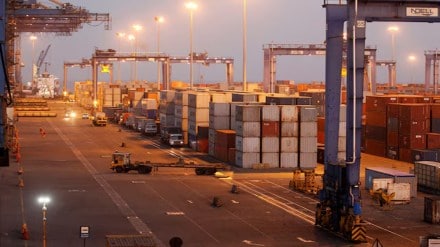By Biswajit Dhar
Last month, the department of commerce announced its decision to take a break from negotiating several free trade agreements (FTAs) in order to review its extant strategy in respect of these agreements. However, this decision would not adversely affect negotiations with partners like the European Union (EU) and the UK that are at advanced stages. The ostensible reasons for the government to press the “pause” button on FTAs, according to media reports, are to avoid granting “unintended concessions” to non-members of FTAs, monitoring third-country goods entering India via FTA partners, and providing assistance to domestic industries so as to enable them to improve their presence in the markets of the partner countries. The government is also putting in place standard operating procedures (SOPs) for the new FTA strategy. Once the SOPs are adopted, so the government has assured, the process of negotiating new FTAs would be put back on track.
The SOPs that the government is proposing to develop should essentially draw upon India’s two-decade-long experience of engaging in FTA negotiations involving several of its major trade partners. Going by the narratives created around the FTAs that are either being implemented or are currently being negotiated, it is clear that the negotiating processes of these agreements were fraught with weaknesses. Consequently, soon after the FTA with the Association of Southeast Asian Nations covering the goods sector was implemented, it became obvious that not only had the intended benefits for India in terms of enhanced market access for its products not materialised, but its trade balance was also deteriorating due to consistently rising imports. Not surprisingly, once the National Democratic Alliance (NDA) government assumed power, it called for review of existing FTAs, besides putting on hold all the FTAs that were being negotiated by the United Progressive Alliance government, with the EU, Canada, and Australia.
But it made one major exception: the NDA government decided to remain engaged with the Regional Comprehensive Economic Partnership (RCEP) negotiations. Thus, even when it was deeply concerned about the outcomes of three existing FTAs with its East Asian partners, the NDA government was persuaded to join the RCEP negotiations. What was more, throughout the process of RCEP negotiations, the government appeared oblivious to the travails of several manufacturing industries in the country, which were ill-prepared to face competition from their counterparts from the East Asian region, especially China. The concerns of the Indian industry seem to have been taken on board as India opted out of the RCEP negotiations in 2019, as the government decided to adopt a more well-considered approach towards the FTAs. However, two years hence, the government announced that it was making a major push on the FTA front by negotiating 13 FTA, including those that were stalled from 2014. Two of these agreements are currently being fully implemented, namely, with the UAE and the European Free Trade Area (EFTA) comprising Switzerland, Norway, Iceland, and Lichtenstein.
There are two facets of India’s involvement with bilateral trade agreements. First, as is evident from the above, is a stop-start approach to FTA negotiations, or absence of consistency. The second is the lack of transparency in the negotiating processes. The priorities of the government in each of these FTAs and the benefits that it is seeking to achieve through the formalisation of these agreements were never put in the public domain; in other words, the agreements were negotiated/are being negotiated in secrecy.
The absence of transparency in the process of FTA negotiations stands out in contrast to the government’s approach in the World Trade Organization (WTO) negotiations, where it has systematically been putting its negotiating positions in the public domain. This helped trigger discussions among public interest groups, whose interventions on key issues such as food security and access to affordable medicines are particularly significant. Importantly, arguments presented by these groups have stood the government in good stead during the ensuing negotiations. Given the advantages it has reaped through greater transparency in the WTO, it is difficult to understand why FTAs are negotiated in secrecy.
In contrast, some of India’s FTA partners have been forthright in putting their negotiating proposals in the public domain. For instance, the EU had made public its entire negotiating position on the proposed FTA with India soon after the negotiations were relaunched in 2022. The EU had clearly enumerated its demands, making it easier to negotiate and to effectively safeguard its interests. Through this process, the probability that the outcomes of the FTA negotiations would spring surprises on the stakeholders reduces considerably.
Thus, there cannot be an alternative to conducting FTA negotiations in a transparent manner for this can allow a better assessment to be made of the likely effects of the agreements on different sections. Promoting an engaged public discourse on the possible effects of the FTAs in undoubtedly a better approach than the behind-the-curtains “stakeholder consultations”, which have been the preferred approach of the government thus far.
Therefore, one of the major learnings from India’s experience with FTAs is that lack of transparency in the negotiating processes have not served the country’s interests well. Adoption of a more transparent process in which the government puts in public domain its negotiating proposals, facilitating effective participation of all stakeholders, needs to be one of the more important elements of the SOPs. Such a step can help avoid imbalances in market access commitments as in the East Asian FTAs, or prevent amendment of the Indian patents act, as has been done in the agreement with EFTA, for this can seriously undermine access to affordable medicines in the country.
The writer is distinguished professor, Council for Social Development.
Disclaimer: Views expressed are personal and do not reflect the official position or policy of FinancialExpress.com. Reproducing this content without permission is prohibited.
